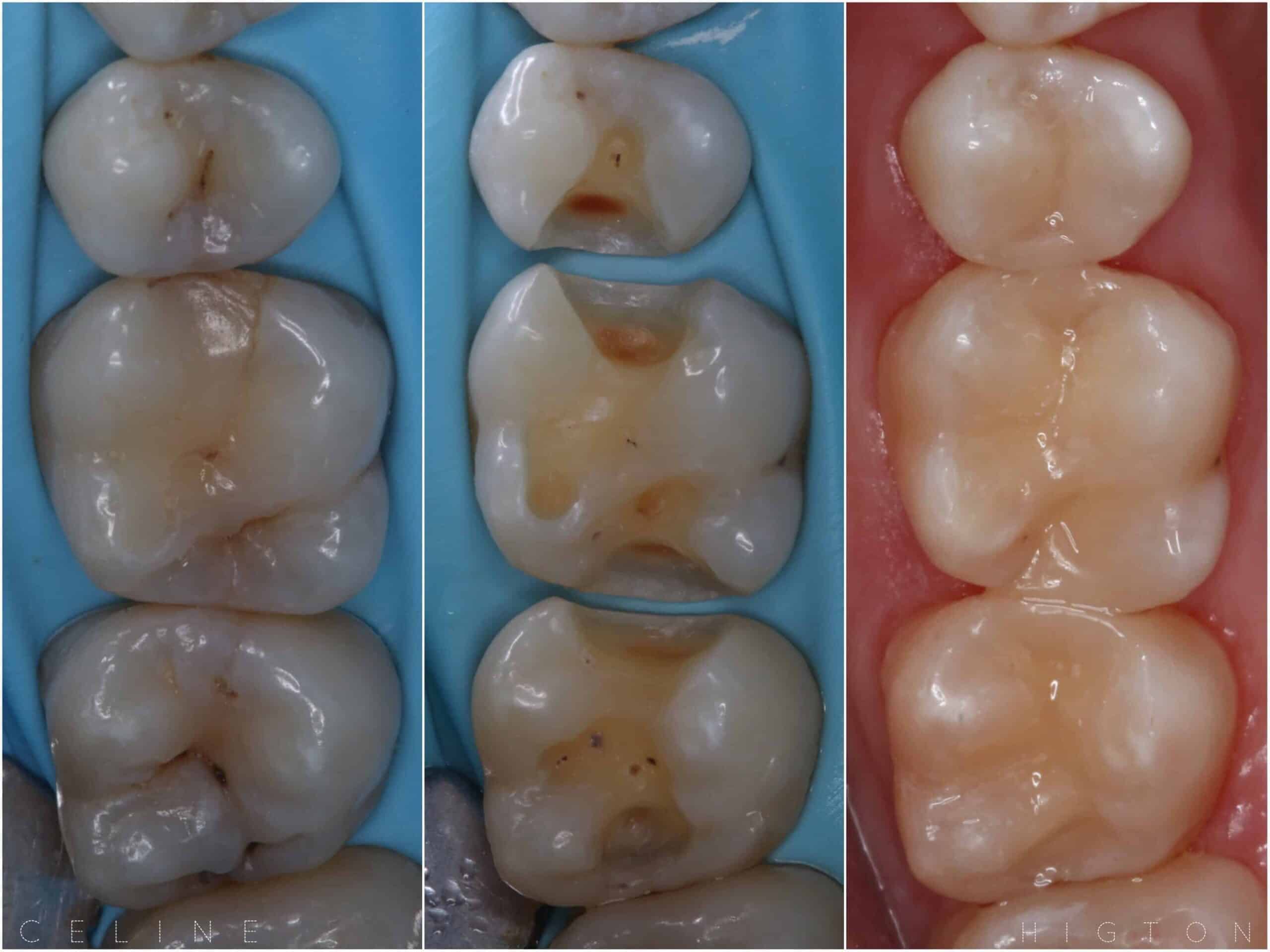Call us now or book online for a same-day appointment
Innovation in Restoration
We use cutting-edge materials and state-of-the-art methods to create restorations that are not only aesthetically pleasing but stand the test of time. Our commitment to technology is a promise of quality to our patients.
Preserving Your Dental Health
Post-treatment care is crucial for enduring results. We’ll provide you with the maintenance advice you need to ensure your restorations and dental health remain optimal.
Transparent Pricing for Peace of Mind
We provide clear pricing for our range of restorations, ensuring you can make informed choices without any surprises.
Begin your path to a radiant smile today with Beverley Dental’s comfortable and attractive dental restorations. We accommodate your needs with same-day bookings, ensuring that your dental care fits smoothly into your busy schedule. Contact us at 020 8241 2515 or [email protected] to arrange your appointment. Alternatively, visit us online to book directly. We are conveniently located at 362 Coombe Lane, West Wimbledon, Raynes Park, London, SW20 0RJ, ready to welcome you to the start of your journey towards optimal oral health.
What are restorations/dental fillings?
Dental restorations, also known as dental fillings, are common procedures to repair and restore teeth impaired by decay or breakage. The primary purpose of a dental filling is to return the tooth to its original function and shape, and to prevent further decay by sealing off any spaces where bacteria can enter.
Understanding Dental Fillings
Dental fillings come in different materials, each with its unique benefits. Common materials include composite, porcelain, and, less commonly, gold or silver amalgam. The choice of material typically depends on the location of the filling, the extent of the repair, and aesthetic considerations.
Composite Fillings
Composite fillings, or white fillings, are popular due to their ability to blend with the natural colour of your teeth, offering a more discreet solution. They are ideal for front teeth or visible parts of the teeth.
Porcelain Fillings
Porcelain fillings are durable and colour-matched to your teeth, often used for larger cavities or for restoring molar teeth where the chewing pressure is greatest.
The Process of Filling a Tooth
The process involves the dentist removing decayed tooth material, cleaning the affected area, and then filling the cavity with a filling material. This treatment effectively restores the tooth’s integrity and prevents the spread of decay.
Opting for a dental restoration can significantly improve the health and appearance of your teeth, ensuring that your smile remains both beautiful and functional. Regular dental check-ups and good oral hygiene practices are essential to maintain the longevity of your fillings and overall oral health.
How do I know if I need a dental filling?
Recognising the need for a dental filling is often a result of identifying symptoms of tooth decay or damage. Common indicators include sensitivity to hot or cold temperatures, visible holes or pits in your teeth, pain when biting down, or a sudden toothache. If you notice any changes or discomfort in your teeth, it’s advisable to consult your dentist.
Signs of Tooth Decay
Tooth decay is the primary reason for fillings. It starts with plaque, a sticky film on teeth, which can harden into tartar. As the bacteria in plaque produce acids that erode tooth enamel, cavities form. A dental examination can confirm whether the softened, discoloured, or chipped areas are decay that requires a filling.
Assessing for Fillings
During a check-up, your dentist will examine your teeth using a small mirror and may take X-rays to determine the extent of decay or damage. If they find a cavity, they will recommend the best type of filling material for your needs.
Early intervention with a filling can prevent more significant issues, such as pain, infection, and potential tooth loss. Fillings restore the tooth’s structure and can prevent the necessity of more extensive procedures in the future.
How long does it take to get a dental filling?
The duration of a dental filling procedure can vary, generally taking from 20 minutes to an hour. This timeframe depends on the extent of decay, the number of teeth that require treatment, and the type of filling material used. Simple fillings typically are completed in one short visit, whereas more complex cases involving multiple teeth or steps may require additional time or appointments.
Procedure Timeline
A typical filling procedure involves numbing the affected area, removing decay, shaping the space for the filling, and then applying the filling material. Your dentist will finish by polishing the filled tooth.
Factors Affecting Treatment Time
Factors such as the tooth’s location in the mouth, the complexity of the cavity, and the need for additional dental interventions can extend the procedure time.
Despite the variable time, getting a filling is a routine procedure, and you can usually resume your normal activities immediately after the appointment. It is, however, always best to discuss with your dentist what to expect specifically for your situation.
What types of dental fillings are there?
There are several types of dental fillings, each suited to different needs and preferences. The most commonly used are composite resins, which are favoured for their natural appearance and are typically used for front teeth or visible parts of the teeth. Dental amalgam, made from a combination of metals, was once the standard but is less used now due to aesthetic and health concerns.
Varieties of Fillings
Other options include gold fillings, known for their durability, and porcelain fillings, which are stain-resistant and can be colour-matched to your teeth. Glass ionomer fillings release fluoride to help protect the teeth from further decay and are often used for fillings below the gum line or for young children.
The choice of filling will depend on the location of the cavity, the extent of the decay, the cost, and personal preference. Your dentist will discuss the best options for your dental health and cosmetic goals during your consultation.
Do white dental fillings discolor over time?
White dental fillings, also known as composite fillings, are designed to match the colour of your teeth closely. While they are more aesthetically pleasing and can blend seamlessly with your natural teeth, they can sometimes discolor over time. Factors contributing to this include the consumption of staining substances like coffee, tea, red wine, and tobacco, as well as the natural aging process of the filling material. However, with proper care and regular dental check-ups, the longevity and appearance of white fillings can be maximised.
How long do dental fillings last?
The lifespan of dental fillings can vary significantly based on the material used, the size of the filling, its location, and your oral hygiene practices. Composite fillings, for instance, typically last between 5 to 10 years before they may need replacement. Gold and porcelain fillings can last longer, sometimes up to 15 years or more, with proper care. Regular dental check-ups are crucial for monitoring the condition of fillings and extending their longevity.
Can I eat normally after getting a dental filling?
After receiving a dental filling, it’s advisable to wait until the numbness from the anaesthesia wears off before eating to avoid accidentally biting your cheek or tongue. With composite (white) fillings, which set immediately, you can eat as soon as you feel comfortable. However, for certain types of fillings, your dentist might recommend waiting a specific period before eating hard or sticky foods. Always follow your dentist’s specific instructions on aftercare to ensure proper healing and longevity of the filling.
Can dental fillings help with sensitive teeth?
Dental fillings can indeed help alleviate sensitivity in teeth that is caused by decay or minor fractures exposing the tooth’s dentin. By sealing these openings with a filling, you protect the tooth from extreme temperatures and other factors that can trigger sensitivity. However, it’s important to identify the underlying cause of the sensitivity with your dentist to ensure that a filling is the appropriate solution and to discuss other treatments if the sensitivity is due to gum disease or other issues.
When would I need a temporary filling?
A temporary filling is often necessary when a tooth’s future viability is uncertain and we need to assess its reaction to treatment before proceeding with a permanent solution. It acts as a provisional measure in instances where a tooth exhibits symptoms that raise concerns about its health. Additionally, it serves as a protective barrier, safeguarding a decayed area from further deterioration while we prepare a comprehensive plan to restore the tooth’s structure and function.
Such fillings are also utilised during multi-stage dental procedures, like root canal therapy, when the tooth requires time to settle between appointments. By sealing the cleaned-out cavity, a temporary filling prevents contamination between visits. They are ideal in emergency dental situations as well, providing a quick fix to alleviate pain and prevent additional damage until a more lasting treatment can be administered.
It’s important to follow up with your dentist for the permanent restoration, as temporary fillings are not designed to withstand long-term use. This interim solution is part of a larger strategy to ensure the health and longevity of your teeth, playing a crucial role in dental restoration practices.
Can you replace my amalgam fillings?
Yes, we can replace your existing amalgam fillings with composite fillings, which are tooth-coloured and may be more aesthetically pleasing. While your amalgam fillings might still be functioning well, we understand that you might prefer the appearance of white fillings. Our dental team can arrange for the safe removal of your old fillings and the placement of new, composite ones.
Opting for composite fillings can provide both cosmetic and functional benefits, aligning with the latest practices in dental restorations. These fillings bond directly to the tooth surface, potentially restoring most of the original strength of the tooth. They are less conspicuous than amalgam fillings, blending seamlessly with your natural teeth, and they require the removal of less tooth structure, which helps preserve more of your natural tooth.

